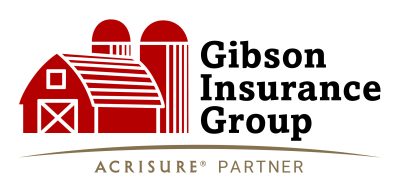February has come and gone and the spring minimum guarantee prices for crop insurance have been set. The spring guarantee for corn is set at $5.91. This is a penny higher than last year. Soybeans are set at $13.76 per bushel. This is down 57 cents from last spring, but still a historically high guarantee price.
Today I had the opportunity to work with one of our producers, let’s call him Joe, and help him look at his marketing plan for 2023. It was interesting to see how he planned to make sales through the year and to help him correct a few misconceptions he had about the revenue products.
Joe has a corn APH of 152 bu/acre and chooses to take 80% coverage level using the enterprise unit option. His budget indicates that he will have a variable cost of $674 per acre to plant and harvest corn (this is considerably more than last year).
Joe’s goal is to make $225 per acre profit over his variable costs. His Revenue Protection (RP) policy guarantees Joe a minimum guarantee of $718.65 per acre (152 bu/ac x 80% level x $5.91= $718.65). Essentially what Joe has done is priced 80% of his 152 bu APH, 121 bushels, at $5.91 per bushel. This leaves him with the other 20% of his average production as unpriced. Using crop insurance alone as his marketing tool, Joe will be looking at a profit over variable costs of $44.65 per acre. This is much less than Joe’s goal of $225 per acre profit. So what can we do, especially with the 20% of his potential production unprotected, and what are the next steps?
Joe has never used the futures market to lock in prices and has heard horror stories of margin calls that nearly broke some producers. He doesn’t have the time nor the interest to watch the markets daily to constantly manage positions, but he does need to price the 20% of his crop at $5.91 to reach his revenue goal. Neither of us can predict the weather so we decided to continue to use his 10-year history of 152 bu/ac instead of manipulating yields to make numbers work.
We looked at the markets and both agreed a couple of things will likely happen over the next six months of the growing season. Every year, at some point, we will enter a “weather market” where we have production scares. This could be at planting, pollination, or even during harvest. During these times the market rallies and gives selling opportunities, either in the futures or actual cash markets, to producers willing to take advantage of these rallies. This will happen again in 2023.
On top of this we are in a very unstable geo-political climate. This too can cause market volatility where prices can move to the upside for little reason. The war in Ukraine is a prime example of this. Access to the Black Sea ports that Ukraine needs to easily ship their agricultural products to the rest of the world are very limited.
Joe’s first thought was to price physical grain to cover the upper 20% of his expected production, but this opens risks as well. What would happen if we had a summer like 2012 and did not raise a crop in excess of his 121 bushel insurance guarantee? If this were the case Joe would have to actually buy grain on the open market to fill these contracts or pay the elevator the difference if the price rose substantially.
After looking at all the different marketing options and taking into consideration Joe’s unwillingness to make possible margin calls we decided that PUT options may be the best tool for him to use to reach is revenue goals.
Options are not new, but they are something that many producers seldom, if ever, use. PUT options give Joe the right to sell his product at a given price at a set futures contract month.
Joe is watching for a rally in the DEC 23 corn price that will be above the $5.91 crop insurance guarantee plus the cost of purchasing a put option. When prices reach this goal he will be in a position to buy the PUT options to cover the unpriced portion of his expected production. This move alone will achieve his goal of $225/acre return over variable costs. (20% x 152 bu x $5.91 = $179.66.) Add $179.66 to his $44.65 from crop insurance and he will meet his goal of a $225/acre return over variable costs. If prices were to move higher he could exercise the PUT and cash in the time value remaining and reestablish his coverage at a higher floor price.
Each producer has their own strengths and tolerance for risk. Joe is comfortable using PUTS for the first time as he can see what the costs are upfront. Some of us, myself included, will continue to hedge our production using the futures market. This is because we have the time or the interest to stay in touch with the market daily and enjoy the excitement of marketing.
The way we have always done things and the way grandpa farmed may no longer be adequate in today’s business environment. Today we have more tools than ever to help producers remain profitable. In 2023 Gibson Insurance Group will be partnering with Ben Brown of the University of Missouri to help interested producers learn more about marketing and preparing a market plan. This program will cover all grains and livestock and will be dictated by what each participant wants.
We are hoping to get feedback from producers on the type of learning environment you would prefer. Once this is established we will get a group together for an informational meeting and proceed from there. If you would be interested in learning more or participating in the class, please contact us at 660-433-6300. We hope to hear from many of you!


